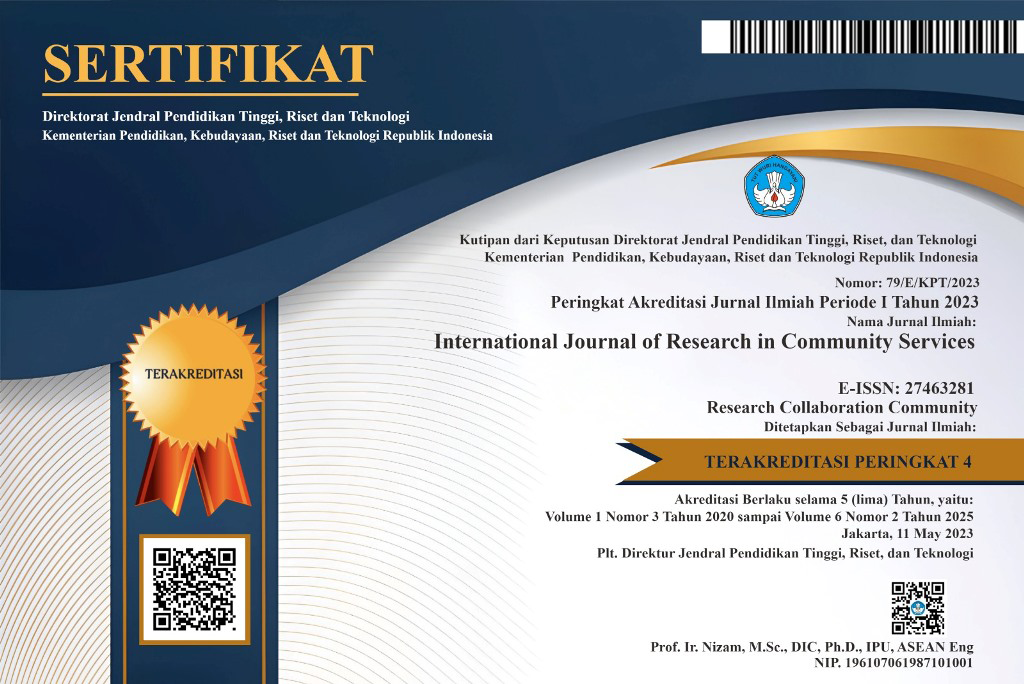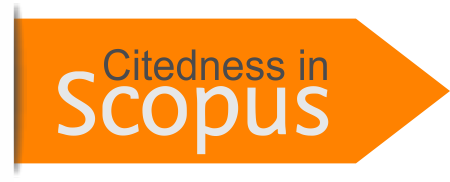Early Training on Risk Mitigation of Economic Losses Due to Natural Disasters in the Agricultural Business Sector in Tasikmalaya Regency
Abstract
Natural disasters are unexpected events caused by nature, including earthquakes, tsunamis, hurricanes, droughts, floods, volcanic eruptions, landslides and hurricanes. From the several examples of natural disasters above, of course there are a lot of losses in various fields, one of which is in agriculture, with the negative impacts that exist, there needs to be countermeasures to anticipate these negative impacts. One of the steps we can take after a natural disaster occurs to reduce these losses is to mitigate risks. Risk mitigation itself is breaking down (diversifying) into smaller risk parts, and forming an investment portfolio. At training this time, we as a team will provide counseling to MI Cipicung students entitled "Training in Mitigating the Risk of Economic Loss through Diversification and Insurance in the Agricultural Business Sector of Tasikmalaya Regency".
Keywords
Full Text:
PDFReferences
Carter, W. N. 1991. Disaster Management: A Disaster Manager’s Handbook. Manila: Asian Development Bank
Cruden. 1991. A simple definition of landslide. Bulettin Int. Assoc. for Engineering Geology. 43, 27-29.
Hidayat, Y., Sukono, S., and Kalfin. (2021). Mitigation of Natural Disasters as Efforts to Minimize Unwanted Impacts in Baleendah Sub-District, Bandung Regency, Indonesia. International Journal of Research in Community Services, 2(2), 77-82.
Hyun, k. and David, M. 2017. Mitigating flood risk and enhancing community resilience to natural disasters: plan quality matters. Environmental Hazards, 17, 1-21.
Kalfin, Sukono, Supian, S., and Mamat, M. (2022). Insurance Premium Determination Model and Innovation for Economic Recovery Due to Natural Disasters in Indonesia. Computation, 10(10), 174.
Kalfin, Sukono, Supian, S., Mamat, M. and Bon, A. T. Predicting Potential Cases of Natural Disasters in Indonesia Using the Homogeneous Poisson Process. In Proceedings of the Second Asia Pacific International Conference on Industrial Engineering and Operations Management. 4185- 4190
Khan and Mattheuw. 2005. The Death Toll from Natural Disasters: The Role of Income, Geography, and Institutions. The Review of Economics and Statistics, 87, 271-284.
Mardikanto, T. 2007. Ilmu Penyuluhan Pembangunan Sebagai Landasan Penanggulangan Kemiskinan Berbasis Potensi Daerah. UNS-F.Pertanian.
Marin, G. and Modica, M. 2017. Socio-economic exposure to natural disasters Institutions. Environmental Impact Assessment Review, 66(64), 67-64.
Ramli, S. 2010. Manajemen Bencana. Jakarta: Dian Rakyat
Resthiningrum, R. 2011. Keragaan dan Peranan Sektor Pertanian Dalam Perekonomian Wilayah di Kabupaten Blora. Skripsi S1 Fakultas Pertanian UNS. Surakarta
Smith, K. 2001. Environmental Hazards: Assessing Risk and Reducing Disaster. Routledge. London.
Zhang, C., and Fang, Z. 2013. An Improved K-means Clustering Algorithm Traditional K-mean Algorithm. Journal of Information & Computational Science, 1, 193–199.
DOI: https://doi.org/10.46336/ijrcs.v3i3.334
Refbacks
- There are currently no refbacks.
Copyright (c) 2022 International Journal of Research in Community Services

This work is licensed under a Creative Commons Attribution 4.0 International License.
Published By:
IJRCS: Jalan Riung Ampuh No. 3, Riung Bandung, Kota Bandung 40295, Jawa Barat, Indonesia
Indexed By:

This work is licensed under a Creative Commons Attribution 4.0 International License.
View My Stats








